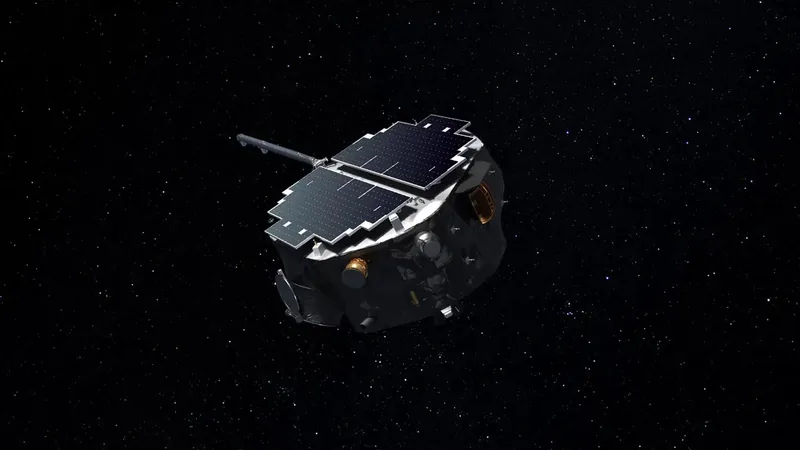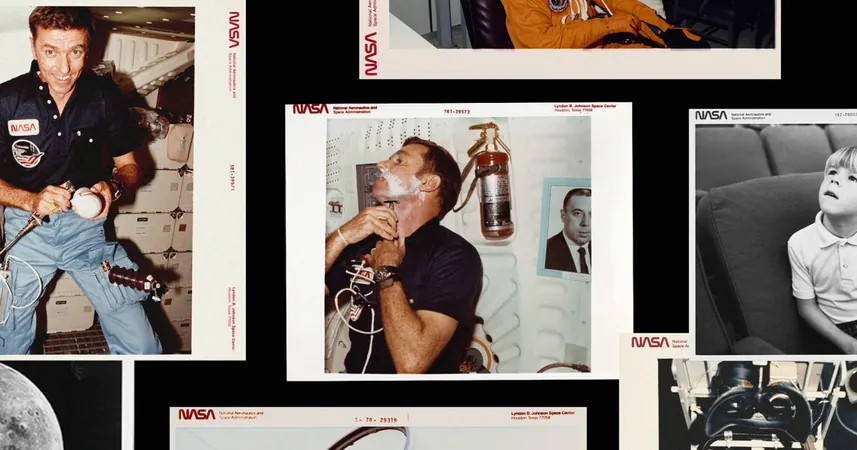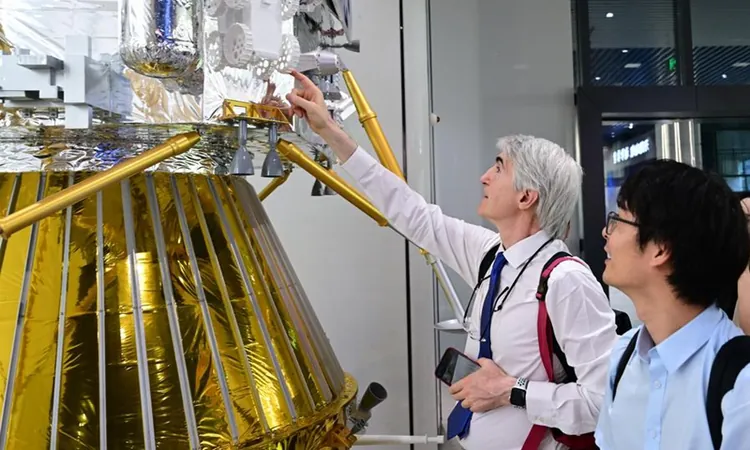
Countdown to Cosmic Discovery: SpaceX to Launch NASA's Trailblazing IMAP Mission on Sept. 23
2025-09-09
Author: Nur
A Pioneering Launch for Solar System Exploration
SpaceX is gearing up for a groundbreaking launch on September 23, set to usher in a new era of solar system exploration. At precisely 7:32 a.m. EDT (11:32 GMT), a Falcon 9 rocket will soar from Launch Complex-39A at NASA's Kennedy Space Center in Florida, carrying three revolutionary spacecraft into orbit.
Meet the Stellar Trio: IMAP, SWFO-L1, and Carruthers Observatory
Tucked inside the rocket's payload fairing are NASA’s Interstellar Mapping and Acceleration Probe (IMAP), NOAA’s Space Weather Follow-on (SWFO-L1), and the Carruthers Geocorona Observatory. Together, they will embark on a mission to uncover the mysteries of the sun’s influence, venturing from Earth's atmosphere to the furthest reaches of interstellar space.
Setting Up Camp at L1: A Unique Orbital Destination
The satellite trio is destined for the Earth-sun Lagrange Point-1 (L1), a stable orbital point bathed in constant sunlight, located nearly 930,000 miles (1.5 million kilometers) from Earth. While each mission has distinct objectives, together, they aim to enhance our understanding of the Earth-sun relationship.
IMAP: The Heliophysics Pioneer
IMAP stands out as the first spacecraft exclusively dedicated to mapping the outer boundary of the heliosphere, the immense magnetic bubble that envelops our solar system, sculpted by solar wind. Equipped with ten sophisticated instruments, developed by teams across the U.S. and 27 international partners, IMAP will provide vital data on solar wind, interstellar dust, and charged particles, while continuously monitoring solar weather.
Real-Time Alerts for Cosmic Radiation
This mission takes on an urgent significance as IMAP and its partners will be the first to observe solar activity from the L1 vantage point. By providing 30 minutes to an hour of advanced warning of hazardous radiation storms heading toward Earth, these spacecraft will be crucial for future astronaut missions beyond low Earth orbit (LEO). With NASA planning the Artemis 2 moonfly and Artemis 3 lunar landing in the coming years, the stakes are high.
Expert Insights: The Science Behind the Mission
Nicky Fox, associate administrator of NASA's Science Mission Directorate, emphasized the mission's vital role in protecting astronauts, saying, "IMAP will give warnings for Artemis 2 and 3 of incoming harmful radiation storms faster than any other spacecraft previously." David McComas, the mission’s principal investigator, added that IMAP data will deepen our understanding of the heliosphere and its protective capabilities against cosmic rays.
NOAA’s SWFO-L1: Your Space Weather Sentinel
Joining this impressive lineup is NOAA’s SWFO-L1, designed as a dedicated solar alert system. It will monitor space weather and energetic particles, relaying critical data to NOAA’s forecasting models to shield satellites and power grids from potential geomagnetic storms.
Exploring Earth’s Exosphere: A Mystery in Motion
Lastly, NASA's Carruthers Geocorona Observatory—formerly known as GLIDE—will investigate Earth’s exosphere, the thin atmospheric layer that stretches almost halfway to the moon. Principal investigator Lara Waldrop noted the uncharted aspects of the exosphere, stating, "We don't know exactly how big it is or how much it changes over time," highlighting its significant role in Earth’s response to geomagnetic events.
As we count down to launch day, the anticipation builds for what promises to be an extraordinary leap forward in our understanding of the cosmos!




 Brasil (PT)
Brasil (PT)
 Canada (EN)
Canada (EN)
 Chile (ES)
Chile (ES)
 Česko (CS)
Česko (CS)
 대한민국 (KO)
대한민국 (KO)
 España (ES)
España (ES)
 France (FR)
France (FR)
 Hong Kong (EN)
Hong Kong (EN)
 Italia (IT)
Italia (IT)
 日本 (JA)
日本 (JA)
 Magyarország (HU)
Magyarország (HU)
 Norge (NO)
Norge (NO)
 Polska (PL)
Polska (PL)
 Schweiz (DE)
Schweiz (DE)
 Singapore (EN)
Singapore (EN)
 Sverige (SV)
Sverige (SV)
 Suomi (FI)
Suomi (FI)
 Türkiye (TR)
Türkiye (TR)
 الإمارات العربية المتحدة (AR)
الإمارات العربية المتحدة (AR)